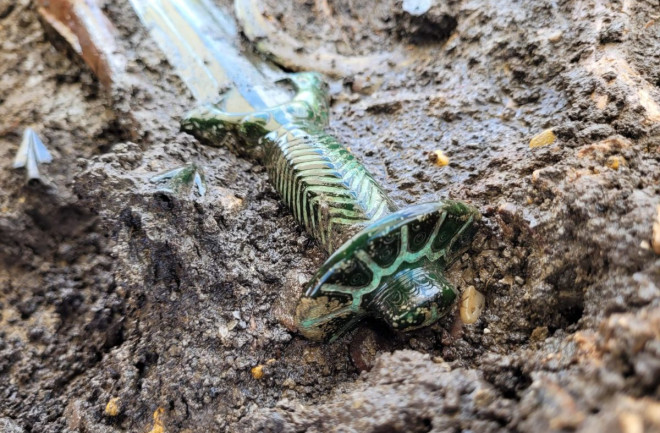Often, when archaeologists dig up an artifact that's thousands of years old, it requires some imagination to picture what it might have looked like back then. That certainly wasn't the case for a team of scientists who peered into a gravesite in southern Bavaria.
In 2023, archaeologists in Germany unearthed a Bronze Age grave containing a 3,000-year-old sword that’s so extraordinarily well-preserved that it "almost still shines," says Bavaria's State Office for Monument Protection in a statement, according to Google Translate.
Discovered in Nördlingen, in the Donau-Ries region of Germany, archaeologists hope the remarkable find can offer a glimmer into Bronze Age life.
How Old Is this Bronze Age Sword?
Johann Friedrich Tolksdorf, an archaeologist with the Bavarian State Office for the Preservation of Monuments, explained that the grave site (and the sword itself) date back to the 13th or 14th century B.C.E.. Discoveries of this kind are rare, he explained, as most known burial mounds were already excavated in the 19th century.

